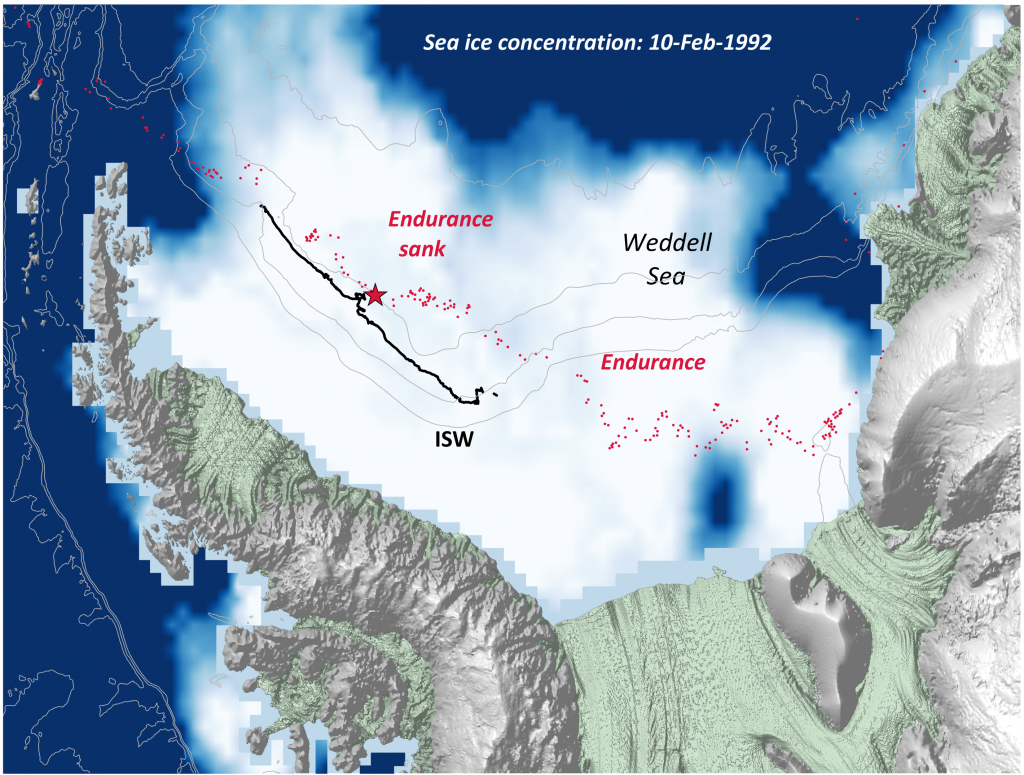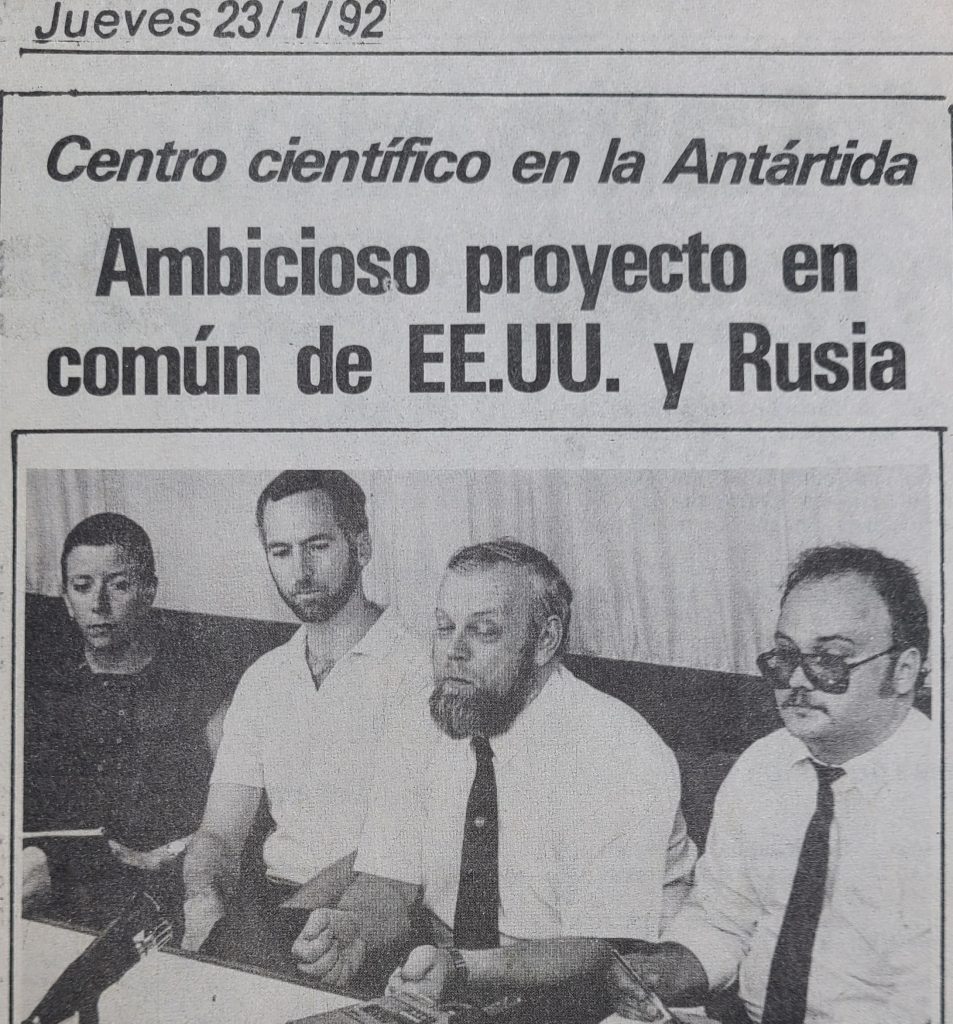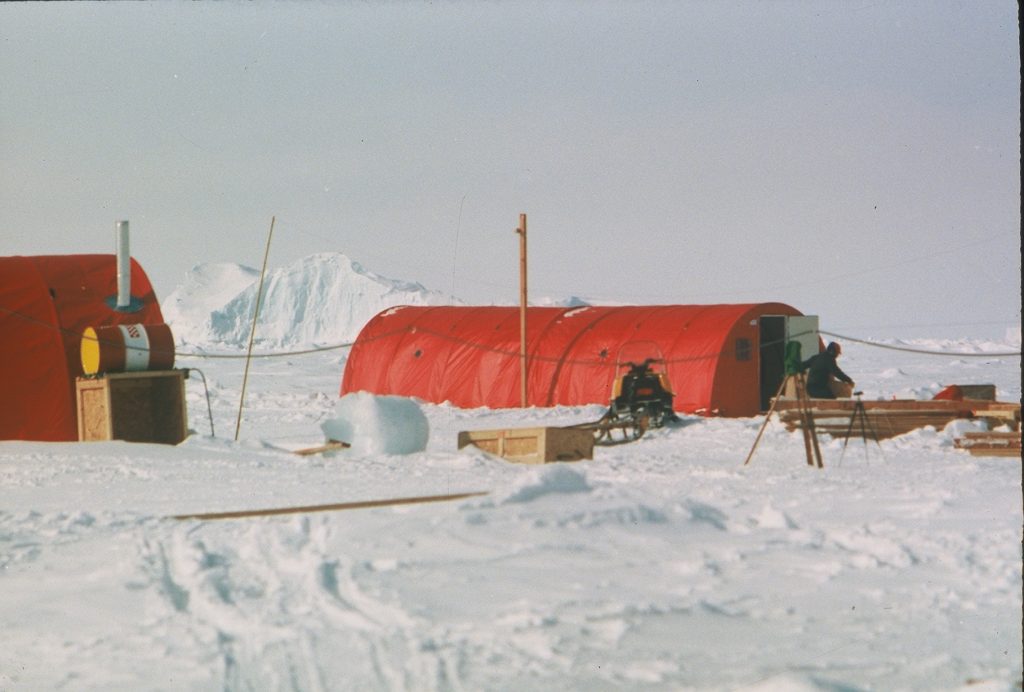Today, ESR celebrates the 30th anniversary of Ice Station Weddell (ISW), a US-Russian ice camp set up from the Russian ship Akademik Fedorov onto a multiyear drifting ice floe near 71.4oS in the western Weddell Sea. ESR’S Laurie Padman was US chief scientist for the first leg. The camp’s track paralleled the last days of Shackleton’s Endurance. It was an ambitious but successful effort, just a year after the breakup of the Soviet Union.
Overall, the camp collected atmospheric, sea ice and ocean data for about 4 months, before being recovered near 65.8oS by the N.B. Palmer. See https://doi.org/10.1029/93EO00260 for a summary. The dataset collected at ISW and from helicopters during this program is still a critical component of what we know about the western Weddell Sea today.

The tracks of Ice Station Weddell (black) and Shackleton’s Endurance (red). Green shaded areas are ice shelves; blue-to-white shading is sea ice concentration when ISW was first established.
Laurie Padman (second from left) at a press conference on the Russian icebreaker Akademik Fedorov in Montevideo, Uruguay, in January 1992. Chief Scientist Valery Lukin (AARI) is second from right. Arnold Gordon (not pictured) at LDEO was overall US lead for the project.


Work tents on the ice at Ice Station Weddell, a US-Russian ice camp. Behind is an iceberg that froze into the sea ice near the camp.
